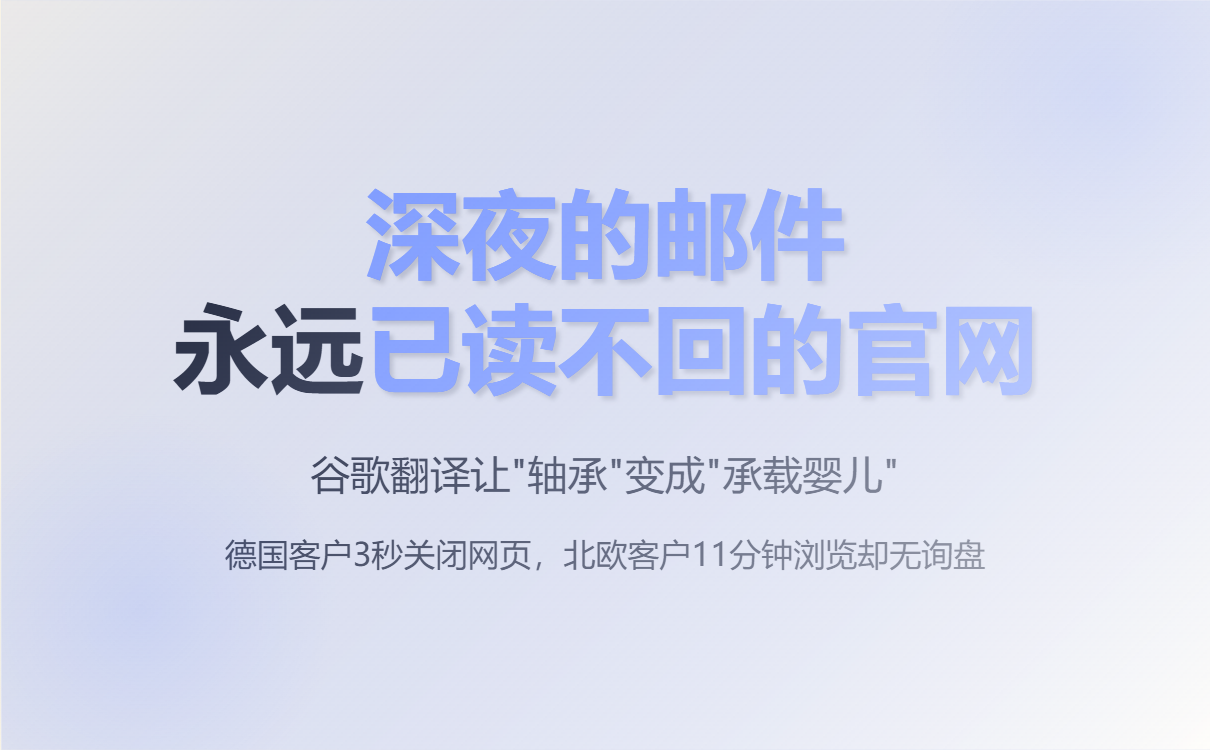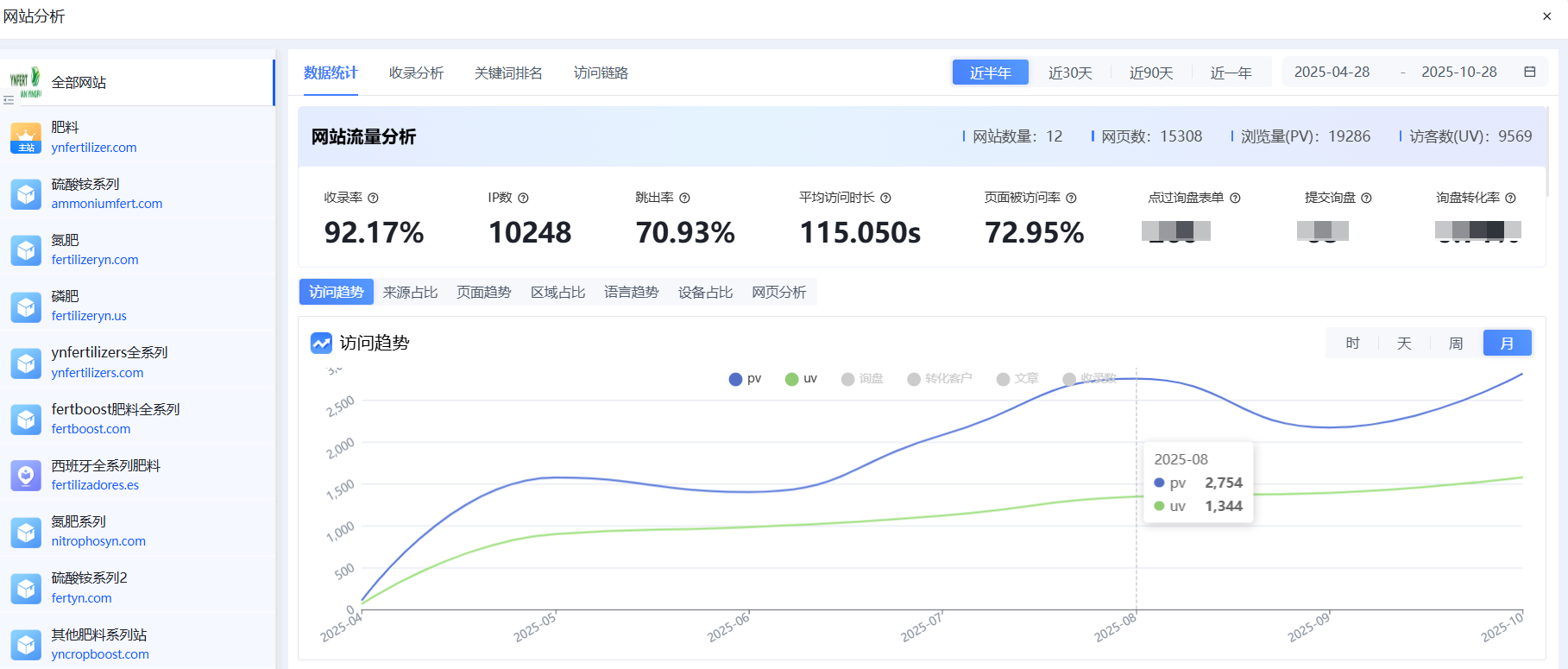
"We invested 200,000 yuan in building a website, but didn't even receive a decent English inquiry"
——This is what I said most often to my team three years ago when I was in charge of overseas business at a small machinery parts factory in Dongguan.

At that time, we were most afraid of customers asking: "Do you have a German version of your website?"
Yes. But that was a page directly generated by Google Translate, and “bearing” was translated as “bearing baby” (a pun error), so the German customer closed the page after opening it for 3 seconds.
We also tried hiring university graduates specializing in foreign trade to write English product descriptions, but the "high-precision CNC machine tools" were described as "iron boxes capable of precision cutting ." The technical specifications even mistakenly wrote "stainless steel material" as "stainless steel iron." The agent politely warned us, "Your content is like farming in a suit. It appears international, but in reality, it's completely out of place."
Most distressingly, a Nordic client spent 11 minutes on the official website (Google statistics showed he repeatedly opened technical documentation), but ultimately did not submit an inquiry. Later, through inquiries, I learned that the client felt the website lacked local certification marks and industry terminology, looking like a makeshift shell.

Until I met Klaus, a veteran German machinery dealer, at an exhibition. He had seven websites in different languages stored on his phone: the German site emphasized TÜV certification and the EU Machinery Directive, the English site highlighted Southeast Asian cases, and the Spanish site even included interviews with local agents.
"That's not translation," he shook his head. "When we write 'energy saving' for Brazilian customers, we use 'reducing electricity bills,' while for German customers we write 'carbon footprint optimization' - the same product requires different ways of speaking ."
That day I suddenly realized: The core of B2B going global is not to throw the Chinese manual into the translation software, but to make customers in every market feel that "you understand me" .

After returning to China, we tested ABke Intelligent Website Builder. Several details convinced me to make the full switch:
"Industry Semantic Library" plugs professional loopholes in advance
Enter "polytetrafluoroethylene sealing ring" and the system will automatically bring up the EU REACH certification fields, technical parameter comparison table, and generate a working condition adaptation guide suitable for engineers to read - this is no longer a website designed by artists, but a website for sales engineers who understand technology .
Content is not "translation", it is "rebirth"
The same injection molding machine was described at the Mexico site as "adaptable to high-temperature and high-humidity environments," while at the Saudi Arabia site, it was emphasized as "anti-sand and dust component life extension solution." AI even added local payment practices to the Vietnam site's FAQ.
Inquiries are starting to gain momentum
In the third week, we received our first German-language inquiry. The customer spent eight minutes on the "Hydraulic Valves" page, downloaded three technical white papers, and directly attached a working condition drawing to the inquiry. AB Customer's backend indicated that the customer accessed the site through the "Multilingual Site Cluster - German Node" and had previously viewed similar products on our French site .

During a recent inspection, I discovered:
While working from home, a Brazilian salesperson used AB Customer's AI customer service to initially screen five Portuguese-speaking inquiries;
A Saudi Arabian customer sent an inquiry at 2 a.m. during Ramadan, and the system automatically marked it as high intent;
Hundreds of product pages that used to take two weeks to produce can now be generated in batches in the time it takes to drink a cup of coffee.
What touched me most was this : an American customer wrote in an inquiry message: "Your website's explanation of ASTM standards is clearer than that of local suppliers."

I know what industrial product business owners are worried about:
I invested money to build a website, but the content is like "singing foreign songs in costumes"
No one in the team understands both technology and eight languages
Always worried about missing out on hidden champion customers in a small language market
My advice now is to spend 20 minutes building a test site ( AB Ke supports a free trial ). Don't rush to overhaul your existing site. Just like we did initially, we quietly created a subsite for the Italian market. Three months later, the cost of inquiries there was 70% lower than at the Canton Fair.
A true overseas independent website should not be a beautiful multilingual instruction manual
Instead, German engineers, Mexican agents, and Vietnamese buyers
I think you are my industry partner in the next office.
PS: We recently used AB Customer's "Content ROI Dashboard" and discovered that our Spanish-language site's "Automation Solutions" page receives three times as many visits as our standard product page—we've now adjusted our entire marketing focus accordingly. There are some truths that only data can reveal.
.png?x-oss-process=image/resize,h_100,m_lfit/format,webp)
.png?x-oss-process=image/resize,h_100,m_lfit/format,webp)

.png?x-oss-process=image/resize,h_100,m_lfit/format,webp)
.png?x-oss-process=image/resize,h_100,m_lfit/format,webp)
.png?x-oss-process=image/resize,h_100,m_lfit/format,webp)
.png?x-oss-process=image/resize,h_100,m_lfit/format,webp)
